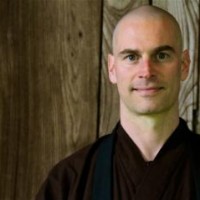Buddhism expresses a love for the wild.
Of course the Buddha was born beneath a tree, had his fondest memories under trees, was enlightened under a tree, and taught and eventually died beneath trees. But that’s not the only way Buddhism is connected with the wild. What we’re doing in meditation practice is dropping into the wildness inside ourselves at a deep inner level.
Meditation teaches us how to connect with the wildness of the mind. Right now I’m reading Carl Jung’s Red Book. When Carl Jung wrote The Red Book he had just split with Freud, the tensions and politics in the budding field of psychoanalysis were intense. Jung himself was growing increasingly unstable, so he decided to take a year off from writing and let himself fall apart. And he did…
What would it be like to go insane?
He withdrew to his home and drew and painted mandalas, many of them gory. He was painting his process of stepping into insanity, of going below what he knew and thought and could control.
Isn’t this what we do when we sit still on the cushion? We get closer to the point of becoming insane, opening up to our eccentricities, the parts of ourselves that lie outside of language. The wildness inside.
Jung’s The Red Book helps me think of meditation as being in the wild, as a controlled way of looking at some layers of mind that are quite irrational, but looking from a place of stillness without getting caught up in images and strong emotions.
Jung says:
“The years…when I pursued the inner images, were the most important time of my life. Everything else is to be derived from this. It began at that time, and the later details hardly matter anymore. My entire life consisted in elaborating what had burst forth from the unconscious and flooded me like an enigmatic stream and threatened to break me. That was the stuff and material for more than only one life. Everything later was merely the outer classification, scientific elaboration, and the integration into life. But the numinous beginning, which contained everything, was then.”
Meditation, as a daily practice keeps us in touch with the irrational side of ourselves that is truly wild. The wild, in meditation, means living below the place where things can be figured out—below plans and strategies, in unmapped regions.
How do we willingly let the bottom of our lives drop out so that we can be wild again? It’s scary unless we begin to see that looking at the mind from a place of stillness is quite grounding. It teaches us resilience and something important about fear.
Can we let go of controlling, figuring out who we are, getting a handle on our emotions?
Can we sit right in the middle of our lives?
To me, that’s touching the wild. Another way of saying “touching the wild” is “intimacy.”
Can we really be intimate with our lives?
That’s a question I’m continually coming back to every time I sit on my cushion.
When I sit down on my cushion, when I enter the wild, the cushion is the centre of the universe—and that’s where I sit, day after day, as I wake up to the intimacy that is my life. This is the place deep insight occurs and it’s also the wellspring of art and joy.
After Jung’s year of painting (documented in the Red Book), he went through a decade of intense creativity and balance.
When you sit still in your practice today or tomorrow, anticipate nothing. Just let the wild arise and see what’s there. I’ll be doing the same.
By Shôken Michael Stone
~
Editor: Brianna Bemel











Read 6 comments and reply